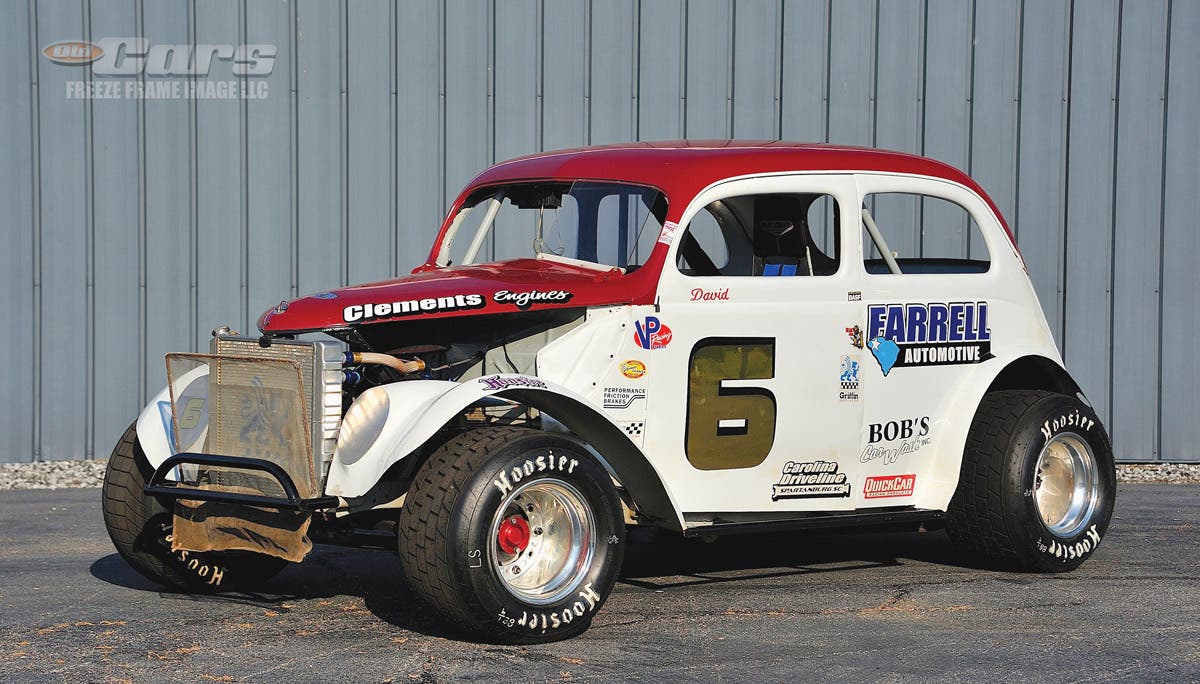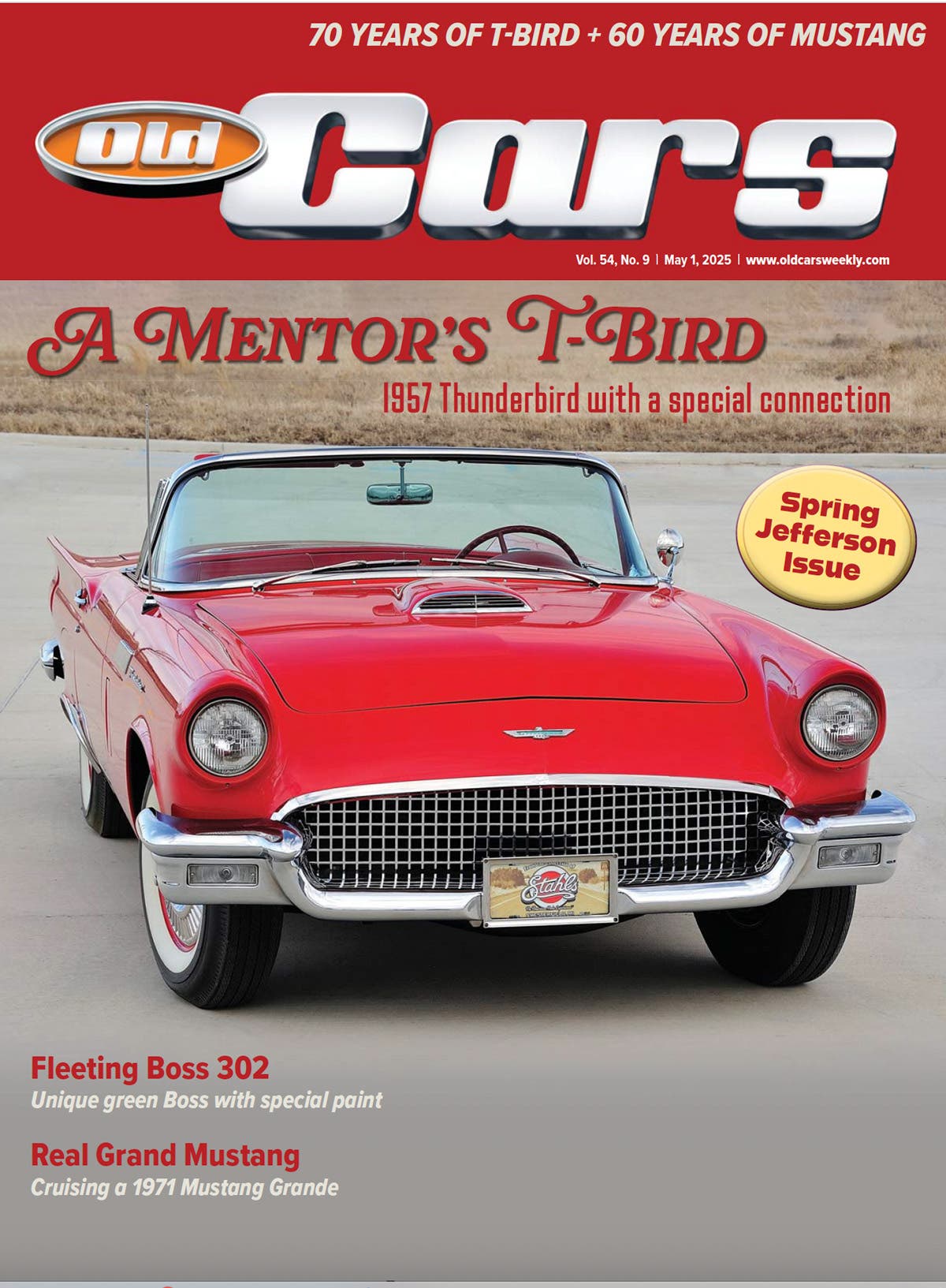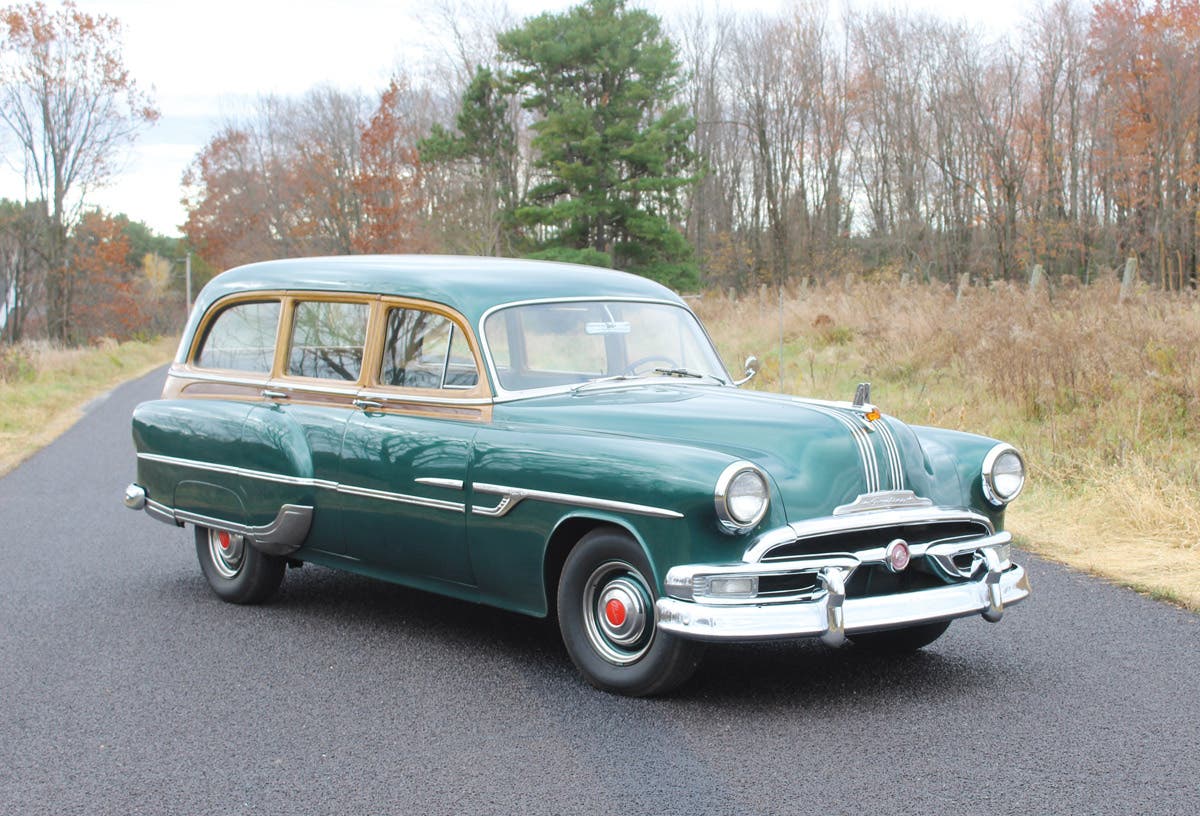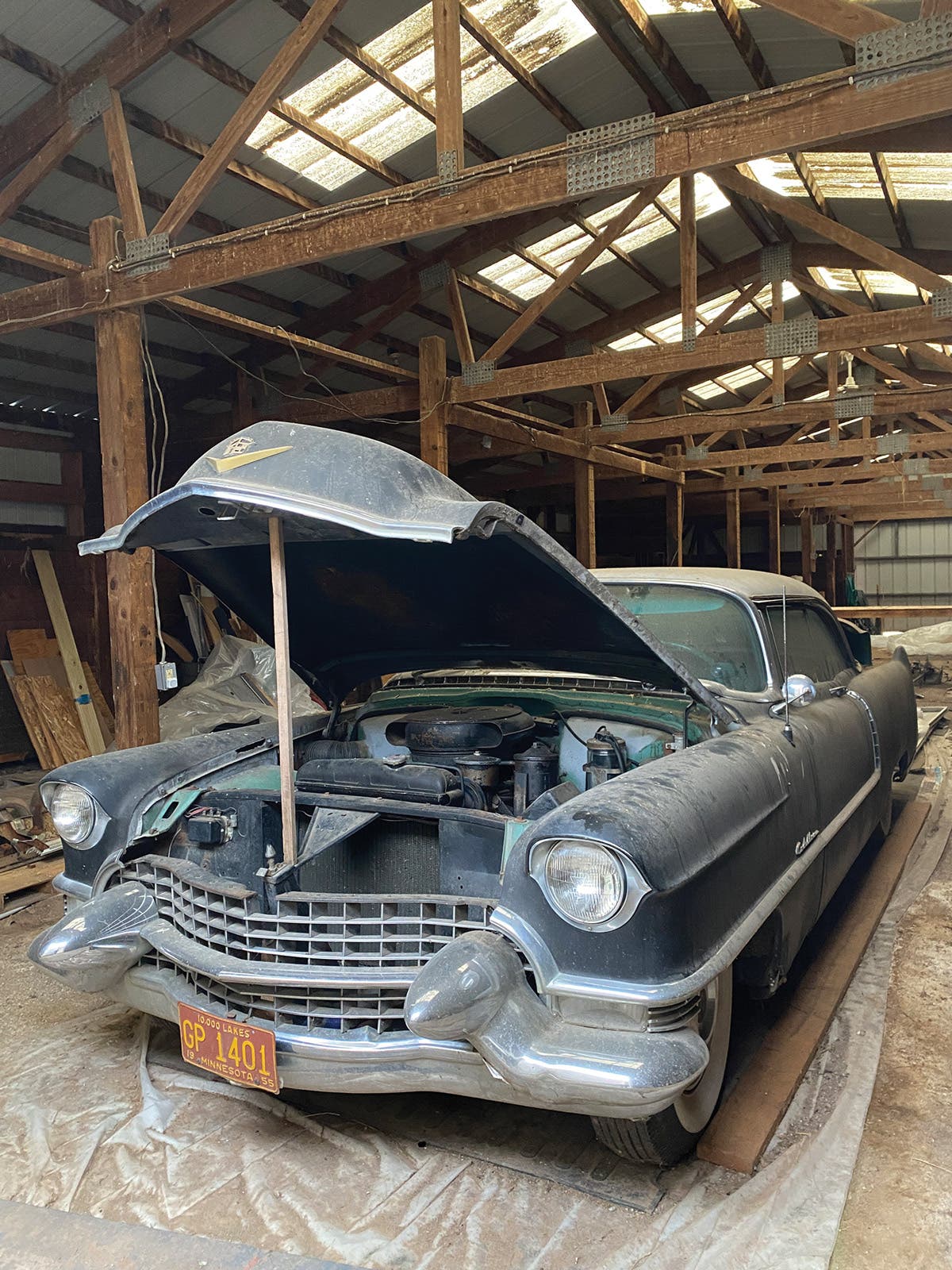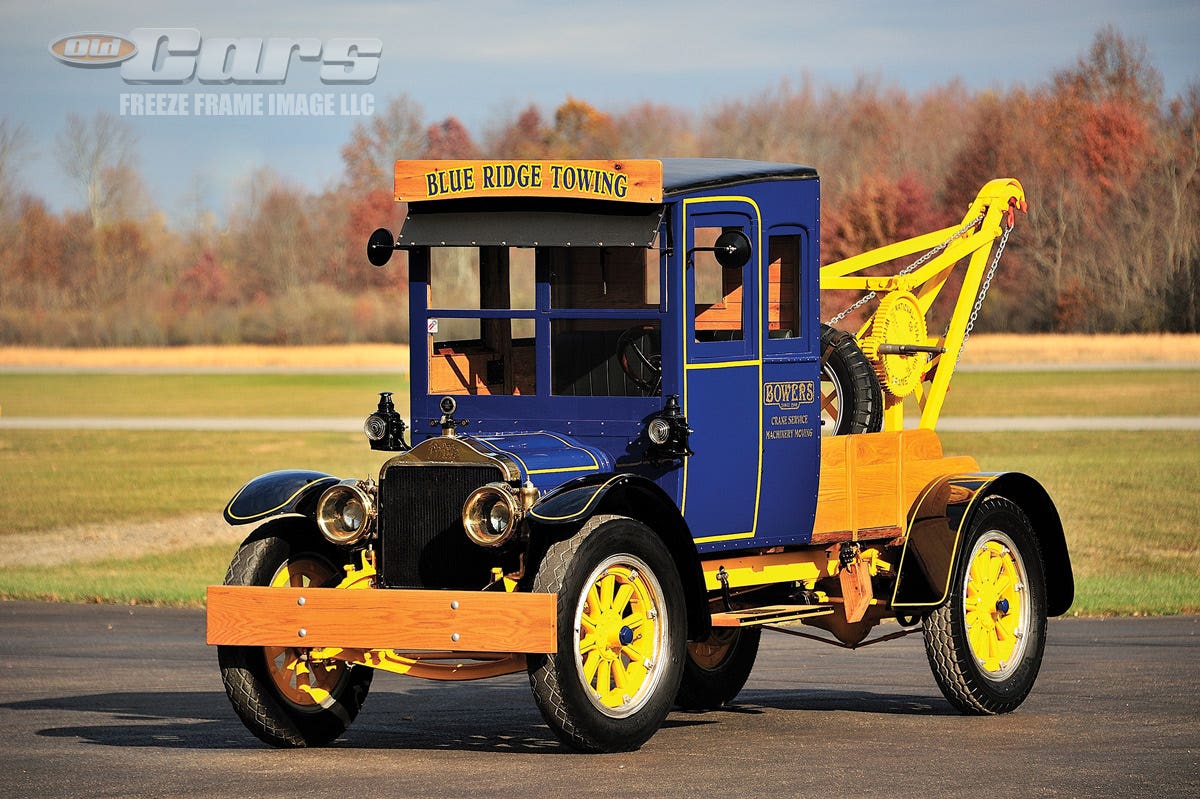Car of the Week: 1908 Maxwell Model D
Jeff Schreiner has a big, long brass horn attached to the side of his 1908 Maxwell. It’s within easy reach, and it will definitely get your attention.
Story and photos by Brian Earnest
Jeff Schreiner has a big, long brass horn attached to the side of his 1908 Maxwell. It’s within easy reach, and it will definitely get your attention.
But the Mondovi, Wis., resident never really needs to sound any alarms when he’s rolling along in his Maxwell. He’s not trying to go fast, so he’s not going to be honking at anyone to speed up. And his car is so big, bright and tall, it’s almost impossible not to see him coming.
“People love it. It doesn’t matter if they are 3 or 30 or 90 … Anytime someone sees a brass car coming, they've got to take a second look. They just have to,” says Schreiner, a veteran collector of fine prewar automobiles — the older, the better. “You just don’t see them driving around very often.
“Drive in a car like this, and people just let you go wherever you want to go!”
Schreiner’s Maxwell is noteworthy on several fronts. Maxwells of any year or body style are scarce to begin with, and his bright red Model D Touring is apparently the oldest of its kind. “It’s the oldest four-cylinder Maxwell in existence. 1908 was the first year for a four-cylinder,” he said. “It’s certainly a fairly rare car. There are only three four-cylinder 1908 Maxwells left. This is the only one that drives. One is up in the Minneapolis era. [The owner has] restored it now, but it’s not together; the other is basically a basket case that will never run again. And out of the three, this is the oldest serial number car.”
The car also has an interesting back story. It was once a “basket case” itself, which makes it a bit of an unlikely survivor. And Schreiner came across is an unlikely place — in the middle of the Iron Range in the hinterlands of northern Minnesota.
“I was on a tour up in the Iron Range with my 1911 Buick,” he explained. “The Horseless Carriage Club had a tour up there and there were about 25-30 of us that went up there. I saw the guy that had this and he was actually running the tour. I had seen the car and I liked it and I said, ‘If you ever want to sell that car, let me know.'
“A year went by and I saw him on another tour in Iowa, and he told me, “I’m thinking about selling the car.’ He was getting up there in age and he was finally thinking of selling it. A couple months went by … and we talked about it and did the deal. He was getting to the point where he wanted to sell it to somebody who would take care of it. He didn’t want it to go overseas or anything like that.”
That was in the spring of 2016, and as luck would have it, the handsome Maxwell had enough documentation and paperwork with it that Schreiner was able to recount at least half of its life. “I got a whole big stack of literature. Somebody in Minnesota … had bought it and restored it in the ’50s. He had bought it as a basket case in the back of a pickup truck. I have a picture of it in the back of the pickup. He had it restored over a time frame of 12-13, years. Before that is kind of sketchy, we don’t really know. From there a guy from Colorado bought it in the ’70s and he only kept it for a few years. From there Jim Laumeyer bought, and he had it for 25, 30 years. He had it all that time and took care of it and toured with it. He replaced the valves and a couple other minor things, but he drove the crap out of this car. It’s got 22,000 miles since it’s been restored.”
THE RISE OF MAXWELL
Not long after the turn of the century, Benjamin Briscoe teamed up with engineer Johnathan Maxwell and millionaire banker/investor J.P. Morgan to launch the Maxwell-Briscoe Motor Company in Tarrytown, N.Y. Briscoe ran a successful sheet metal operation in Detroit, while Maxwell had been an automotive engineer at Oldsmobile and Northern. In 1905, the company debuted two new two-cylinder machines: a two-passenger Model L tourabout, and five-passenger Model H touring. According to the “Standard Catalog of American Cars 1805-1942,” a total of 10 cars were assembled in 1904, with 823 built in ’05.
The company slogan at the time was “Perfectly Simply; Simply Perfect” and the Maxwells quickly distinguished themselves as excellent, durable, no-frills cars. The company evolved swiftly and, after a fire destroyed the Tarrytown plant, went on to established plants in New Castle, Ind.; Pawtucket, R.I.; Auburn, N.Y.; Cranston, R.I.; and Detroit.
In 1906, four-cylinder cars were added to the menu, although two-cylinder machines were still offered through 1912.
The big news in the automotive world for 1908, of course, turned out to be Ford’s introduction of the legendary Model T. The car helped make Ford the top automaker with a whopping 10,202 cars built for ’08. Buick was second at 8,820, followed by Studebaker with 8,132.
Maxwell was fourth on the list with 4,455 assemblies — including Schreiner’s beautiful touring car. A period advertisement in magazines that year asked “What’s a Maxwell?”, then answered its own question by extolling the virtues of the new “new 24-hp, four-cylinder, five-passenger touring car for $1,740…. The latest addition to the Maxwell family has proven to be just what we thought it would, just the car for those who don’t want our runabout at $825, our American Family Touring Car at $1,450; it is the rational car, has all the mechanical features which have made the Maxwell line famous.”
SEEING RED
Schreiner says his car was originally green and was painted bright red later in its life. “They had red and they had green, that was it. Most of them were green. You don’t see too many red ones. This is restored ‘50s, even the paint is from the ‘50s,” he notes. “It’s been touched up in a few spots, but it’s mostly all from the ‘50s.”
The car features diamond-pleated leather seats, loads of brass, a speedometer and clock. An electric starter has been added to make the car easier to use. The folding top is down most of the time, “but I’ve had it up a few times… I think because the car is so tall, it looks cool with the top down. This car sits really tall, especially in back. If you’re sitting back there, you can see right over the top of the cornfields when you’re going down the road.”
Schreiner admits that the Maxwell has been an even better companion on the road than he expected. It looks great, and runs as good as it looks.
“It’s a beautiful running and driving car. We just took it for a drive this morning and it was great. One great thing is there is no water pump, the water just circulates. And these cars never overheat. The hotter they got, the faster the water would pump, where in a water pump car, when an engine gets hot, it’s going to get sluggish and it doesn’t circulate the water as well. On hills, too, it doesn’t overheat.
“The flywheel is up front. On most of the cars the flywheel is in the back. It’s a sliding gear transmission. You’ve got neutral in the middle, then go back once and it’s first, second and third, all in a straight line, just like a drag car would be. [Right-hand drive], I like it, and to be honest you don’t really notice it that much, because the cars are so narrow anyway, it’s like you’re in the middle of the car.”
Some guys might tempted to coddle such a fine — and rare — early machine, but Schreiner doesn’t want his cars to remain idle. He has a bunch of prewar cars and none of them get ignored. The Maxwell might be best suited for warm “top down” days and group drives with other cars of its ilk, but Schreiner insists it will not collect dust in the garage.
“It’s due for a paint job, but it looks good and it’s a great driver,” he says. “I’m going to take it apart and repaint it, but I’m still going to drive it. I’m not going to make a concours car out of it.
“It’s time to repaint it, but then I’m going to keep on driving it.”
Show us your wheels!
If you’ve got an old car you love, we want to hear about it. Email us at oldcars@aimmedia.com



